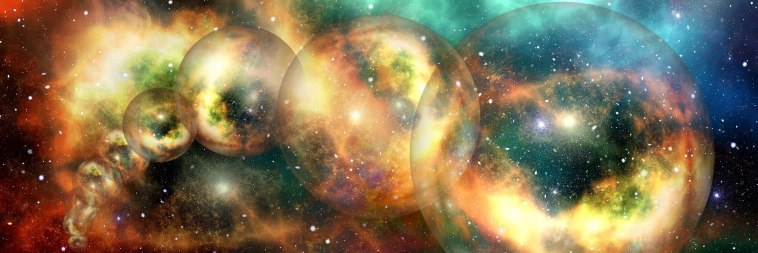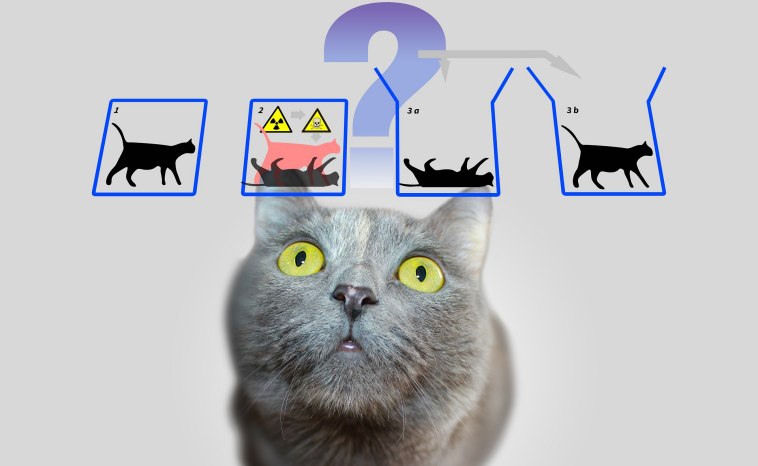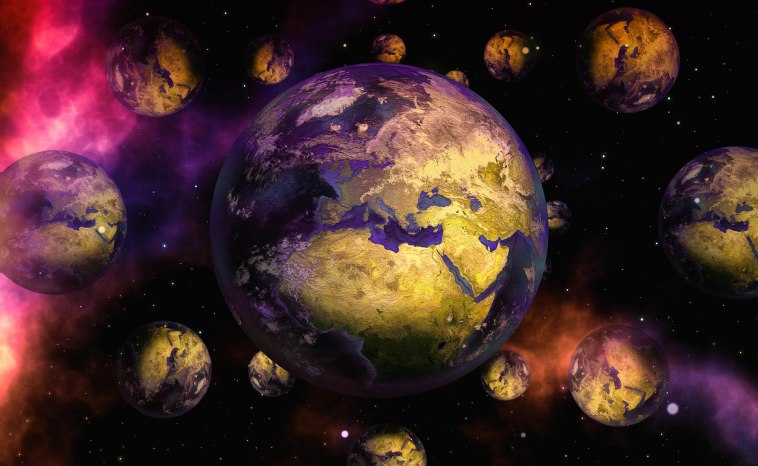Do We Live in a Multiverse?

If we know one thing, it’s that the universe is enormous. Some estimates suggest there could be as many as 200 billion trillion stars in it! But if that’s not enough for you, how about the idea that there could be thousands, millions, or even an infinite number of alternate universes? In this article, we’ll examine the theories and possible evidence and ask the question: do we live in a multiverse?
What Is a Multiverse?
The term’ multiverse’ comes from the words ‘multiple’ and ‘universe’. As the name suggests, it refers to the hypothetical existence of multiple universes, each with unique physical laws and properties. This idea challenges our traditional understanding of a single, all-encompassing universe and suggests that ours may be just one of countless – or possibly even infinite – universes.
The concept of a multiverse is rooted in science and fiction, with numerous authors, television shows, and movies exploring the idea of parallel universes and alternate realities. However, the scientific basis for the multiverse theory is grounded in cosmology, quantum mechanics, and theoretical physics. These disciplines have provided various explanations for how many universes there might be and what they could look like.
Parallel Universes
One aspect of the multiverse theory is the idea of parallel universes. This notion argues that there could be other universes existing alongside our own. Some proponents of the parallel universe theory even suggest that there could be alternate versions of ourselves living in these other universes, experiencing entirely different lives and outcomes.
The concept of parallel universes is intrinsically linked to quantum mechanics, a branch of physics that deals with phenomena at the atomic and subatomic levels. The famous ‘Schrodinger’s Cat’ thought experiment demonstrates the strange and counter-intuitive nature of quantum mechanics, highlighting the idea that particles can exist simultaneously in multiple states until we observe them. The experiment has led some scientists to propose that each possible outcome of a quantum event could create its own separate universe, resulting in an ever-expanding web of parallel universes.

Different Types of Multiverses
While the parallel universe theory is perhaps the most well-known aspect of the multiverse concept, there are several types of multiverses that scientists and researchers have proposed. These include:
Inflationary Multiverse
This type of multiverse is based on the theory of cosmic inflation, which suggests that the universe underwent a rapid expansion immediately after the Big Bang that continues to this day. According to this idea, different regions of space could have experienced varying degrees of inflation, creating distinct ‘bubble universes’.
Quantum Multiverse
The science behind this type of multiverse comes from the world of quantum mechanics. It suggests that every possible outcome of a quantum event gives rise to its own separate universe, resulting in an ever-expanding network of parallel universes.
Brane Multiverse
This concept is a product of string theory and involves the idea of higher-dimensional ‘braneworlds‘, which exist within an even larger, higher-dimensional space called the ‘bulk’. According to this theory, our universe may be just one of many individual braneworlds.
Mathematical Multiverse
This type of multiverse suggests that all mathematical structures, including those that describe our universe, have an independent existence. If true, this hypothesis would mean that any universe that mathematics can describe could, in theory, exist.

The Science Behind the Multiverse Theory
The multiverse theory has gained significant traction in recent years, largely thanks to advancements in several scientific fields. Some of the key ideas and theories that support the possibility of a multiverse include:
Cosmic inflation
Cosmic inflation theorises that space rapidly expanded in the moments that immediately followed the Big Bang. Following this period, the theory suggests that expansion has continued, at one speed or another, and will do so until the demise of the universe – possibly (if the Big Crunch theory is correct) due to the expansion of the universe reversing. This theory helps explain some of our universe’s key features, such as its uniformity and large-scale structure. However, it also raises the possibility that different regions of space could have experienced varying degrees of inflation, leading to the previously mentioned ‘bubble universes’.
Quantum Mechanics
With its quirky nature, Quantum mechanics has also been a significant driving force behind the multiverse theory. The famous Many Worlds Interpretation of Quantum Mechanics, first proposed by physicist Hugh Everett III in the 1950s, suggests that every possible outcome of a quantum event gives rise to its own separate universe. This idea has gained traction recently, with several prominent physicists, such as Stephen Hawking and Max Tegmark, endorsing the concept.
String Theory
String theory is a theoretical framework that aims to connect the peculiarities of quantum mechanics to the theory of general relativity. According to string theory, the universe’s fundamental building blocks are not particles but rather tiny, vibrating strands of energy called ‘strings’. This theory posits that there could be billions upon billions of different configurations of these strings and as many as 26 dimensions. This staggering number of possibilities has led some scientists to speculate that our universe may be just one of countless others.

Is the Universe Deterministic or Non-Deterministic?
One key question the multiverse theory raises is whether our universe is deterministic or non-deterministic. In a deterministic universe, every event and outcome is decided by a set of predetermined conditions, and there is no room for randomness or chance. On the other hand, in a non-deterministic universe, events and outcomes are not necessarily predetermined, meaning that unpredictability and free will can exist.
The multiverse theory, particularly the quantum multiverse, seems to support the idea of a non-deterministic universe. According to the Many Worlds Interpretation of Quantum Mechanics, every possible outcome of a quantum event gives rise to its own separate universe. If true, this means that events are not governed by predetermined paths that must be followed. This idea challenges the traditional understanding of cause and effect, suggesting that our universe may be regulated by a complex web of probabilities and possibilities rather than a fixed set of rules.
Implications of Living in a Multiverse
The idea that we may live in a multiverse has numerous implications, not just for our understanding of the universe but also for our understanding of ourselves and our place in the cosmos. Some of the critical consequences of the multiverse theory include:
The Nature of Reality
The multiverse theory challenges our traditional understanding of reality, suggesting that our universe may be just one of countless others. This idea raises questions about the nature of existence, free will, and what it means to be ‘real’.
The Anthropic Principle
The multiverse theory provides a potential explanation for the so-called ‘anthropic principle’, which argues that the universe appears to be fine-tuned for life, with numerous physical constants and properties perfectly suited for the existence of intelligent beings like ourselves. One possible explanation for this fine-tuning is that there are countless other universes, but we just happen to be in one that is conducive to life.
The Search for Extraterrestrial Life
The multiverse theory also has implications for the ongoing search for extraterrestrial life. If there are countless other universes with different physical laws and properties, other forms of intelligent life could exist in these other universes, possibly even in forms that we cannot begin to imagine.
The Limits of Human Knowledge
The multiverse theory challenges the limits of human knowledge and understanding. There could be aspects of the universe that are beyond our comprehension. This idea raises questions about the role of science and the limits of our ability to understand the nature of reality.

Controversies and Criticisms of the Multiverse Theory
Despite support for the multiverse theory, there are several controversies and criticisms against it. Some of the key complaints include:
- Lack of Empirical Evidence – While there is some theoretical support for the multiverse theory, there is currently no practical evidence to support its existence. This has led some critics to dismiss the concept as nothing more than speculation or science fiction.
- Falsifiability – Another criticism of the multiverse theory is that there is no way to test or prove its existence. Accordingly, this has led some scientists and philosophers to question whether the idea is even a legitimate hypothesis.
- Occam’s Razor – Occam’s Razor is a philosophical principle suggesting that, all things being equal, the simplest explanation is usually the best. Some critics argue that, with no evidence to support the idea, the existence of countless other universes is certainly not the simplest explanation!
Do We Live in a Multiverse?
While the idea of multiple universes may seem like the stuff of science fiction, there is growing theoretical support for the concept. The multiverse theory challenges our traditional understanding of the universe and raises numerous questions about the nature of reality, the limits of human knowledge, and our place in the cosmos.
So, do we live in a multiverse? The answer, for now, remains uncertain. But the mere possibility of such a vast and complex reality inspires awe and wonder in even the most sceptical minds.
While we don’t know what, if anything, exists beyond the realms of our universe, there are plenty of fascinating objects to explore a little closer to home! With the OSR’s One Million Stars App, you can travel through the galaxy from the comfort of your web browser and learn more about some of our galactic neighbours.

